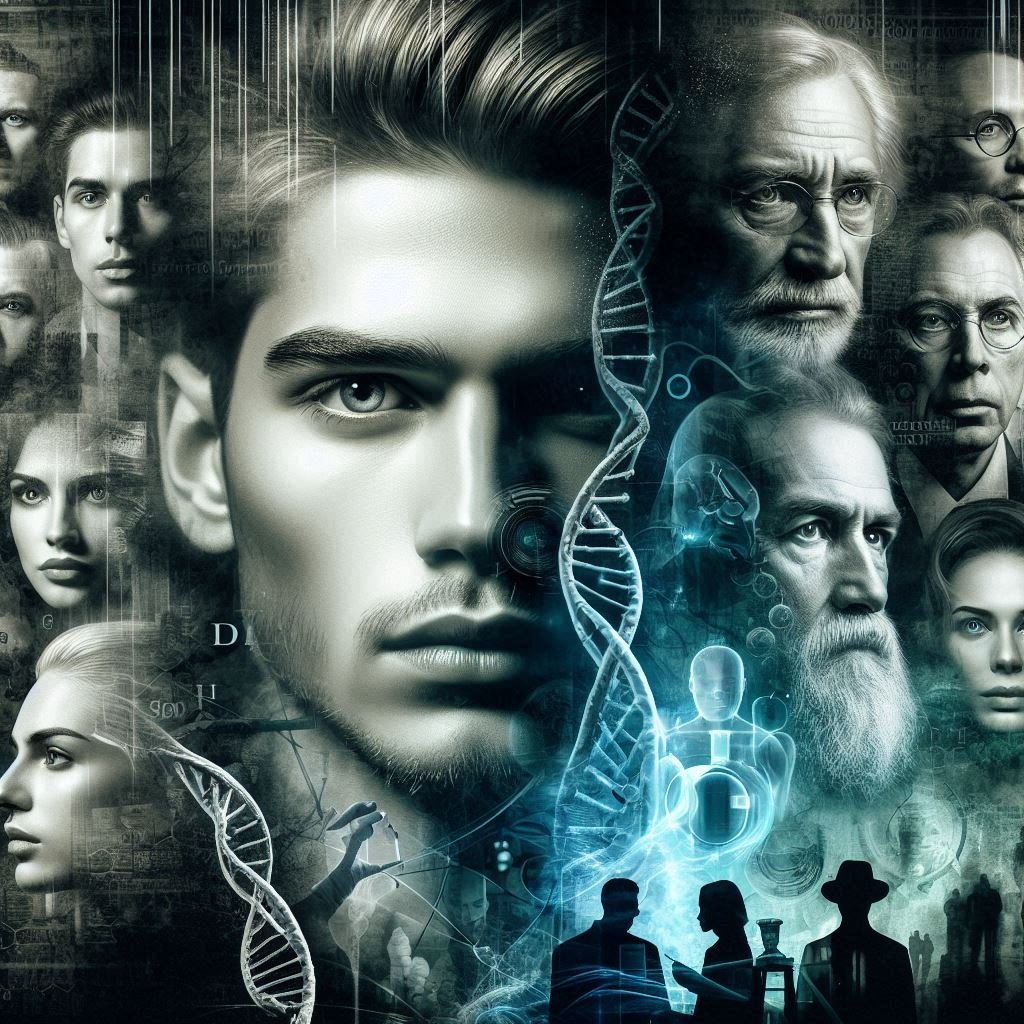Celebrity Cloning Theories: Separating Science from Speculation
Introduction
Celebrity cloning theories have become a staple in conspiracy culture, captivating millions with the idea that some of the most famous people in the world are not who they claim to be. These theories often suggest that A-list actors, musicians, and political figures are replaced by genetically engineered clones. Proponents argue that cloning is used to maintain control over influential figures or even replace those who have died unexpectedly. While these ideas may sound like something out of a sci-fi thriller, they have gained significant traction online, sparking heated debates and endless speculation.
These theories tap into deeper societal anxieties about authenticity, control, and the transparency of powerful institutions. They combine elements of science fiction, historical conspiracies, and modern celebrity culture, creating a potent cocktail that intrigues and mystifies. In this article, we’ll take a deep dive into some of the most popular celebrity cloning theories, exploring their claims, examining the evidence, and presenting scientific rebuttals. By separating fact from fiction, we aim to provide a clearer understanding of this fascinating phenomenon.
1. The Paul McCartney “Replacement” Theory
The Claim
One of the earliest and most enduring celebrity cloning theories revolves around Paul McCartney of The Beatles. According to this theory, Paul McCartney died in a car crash in 1966 and was replaced by a lookalike or a clone to maintain the band’s success. Conspiracy theorists point to alleged “clues” hidden in Beatles’ albums, such as backward messages and cryptic imagery on album covers. Some suggest that his replacement was a clone created by shadowy organizations to preserve The Beatles’ influence over pop culture.
This theory gained momentum during the 1960s and remains popular today, with countless YouTube videos, forums, and even documentaries dedicated to unraveling the supposed mystery. Proponents argue that The Beatles themselves subtly hinted at the truth through their music and visual imagery.
The Evidence
Supporters of this theory cite several supposed pieces of evidence:
- Album Clues: The cover of “Abbey Road” is said to symbolize a funeral procession, with Paul barefoot, representing the deceased. The “Sgt. Pepper’s Lonely Hearts Club Band” album is also believed to contain hidden references to Paul’s alleged death.
- Backward Messages: When certain Beatles songs are played backward, theorists claim to hear phrases like “Paul is dead.”
- Facial Differences: Advocates of the theory argue that photographs of Paul McCartney before and after 1966 reveal subtle but noticeable changes in his facial structure, height, and voice.
- Lyrical Hints: Lyrics from songs like “A Day in the Life” and “Strawberry Fields Forever” are interpreted as cryptic admissions of Paul’s death and replacement.
The Debunking
Scientific evidence and logical analysis debunk this theory:
- Facial Recognition: Modern technology has analyzed photos of Paul McCartney over the years, and no significant discrepancies have been found.
- Backward Messages: The phenomenon of hearing phrases in reverse audio is a psychological effect called pareidolia, where the brain perceives familiar patterns in random stimuli.
- Paul’s Testimony: Paul McCartney himself has consistently dismissed these rumors, often joking about them in interviews.
- Continuity: Paul’s consistent musical output and public appearances over decades make the replacement theory implausible.
Fact-Checking
2. The Avril Lavigne “Clone” Theory
The Claim
Another high-profile theory suggests that Canadian singer Avril Lavigne died in the early 2000s and was replaced by a clone named “Melissa.” Proponents argue that Avril’s sudden change in appearance and musical style is evidence of her being replaced. This theory has gained traction on social media platforms and forums, fueling endless debate.
Some theorists claim that “Melissa” was originally a body double used for public appearances but later took over Avril’s career entirely. This idea has been propagated through blogs, videos, and memes, often blurring the line between satire and genuine belief.
The Evidence
Supporters of the Avril Lavigne cloning theory point to:
- Appearance Changes: Side-by-side comparisons of Avril’s photos from different years show slight differences in her facial features and body language.
- Handwriting Analysis: Some claim that Avril’s handwriting changed after her alleged “replacement.”
- Song Lyrics: Lyrics from her later albums are interpreted as cryptic admissions of her death and replacement.
- Emotional Shifts: Fans argue that Avril’s demeanor and public persona became noticeably different after her supposed replacement.
The Debunking
Science and logic refute these claims:
- Natural Aging: Changes in Avril’s appearance can be attributed to aging, makeup, and changes in personal style.
- Handwriting Variations: Handwriting can naturally change over time due to practice or physical factors like injury or stress.
- Creative Growth: Avril’s shift in musical style is consistent with artists evolving and experimenting over their careers.
- Public Denials: Avril herself has repeatedly laughed off these rumors in interviews, dismissing them as ridiculous.
Fact-Checking
3. Eminem: The Clone Accusation
The Claim
Rapper Eminem is frequently cited in cloning conspiracy circles, with some claiming that he was replaced by a clone after a supposed “death” or disappearance in the early 2000s. The theory argues that his sudden change in appearance, personality, and lyrical style are evidence of a clone.
This theory often intersects with broader ideas about the music industry being controlled by secretive groups, with Eminem’s “replacement” framed as part of a larger agenda.
The Evidence
Proponents highlight the following:
- Physical Changes: Eminem’s facial features, particularly his jawline, are said to have changed noticeably over the years.
- Behavioral Shifts: Some fans claim that Eminem’s interviews and public appearances reveal a different personality than the one he displayed earlier in his career.
- Lyrics: Lines from his songs are interpreted as veiled confessions about being replaced.
- Health Scare: Eminem’s near-fatal drug overdose in 2007 is sometimes cited as the moment of his supposed “replacement.”
The Debunking
Experts and evidence provide clear rebuttals:
- Aging and Lifestyle: Eminem’s physical changes are consistent with aging, weight fluctuations, and personal grooming choices.
- Rehabilitation: Eminem’s behavioral changes align with his journey through drug addiction recovery, which he has openly discussed.
- Artistic Evolution: His lyrical shifts reflect changes in his personal life and maturity as an artist.
- Consistent Output: Despite personal challenges, Eminem has maintained a prolific career, which would be difficult to replicate by a supposed clone.
Fact-Checking
4. The “Clone Centers” Allegations
The Claim
A broader theory suggests the existence of secret “clone centers” where celebrities are routinely cloned and controlled by powerful organizations. This theory implicates figures like Britney Spears, Kanye West, and even political leaders. Some claim these clones are used to influence public opinion or promote hidden agendas.
The concept of “clone centers” is often linked to alleged whistleblowers who describe underground labs and shadowy government projects, further fueling the narrative.
The Evidence
Claims about clone centers often reference:
- Celebrity Meltdowns: Public breakdowns, like Britney Spears’ 2007 incident or Kanye West’s erratic behavior, are interpreted as glitches in the cloning process.
- Insider Testimonies: Some alleged whistleblowers have claimed knowledge of secret cloning programs.
- Media Symbols: Movies, music videos, and TV shows featuring cloning themes are seen as subtle admissions by Hollywood.
- Recurring Patterns: Theorists argue that repeated themes in pop culture hint at a hidden reality.
The Debunking
No credible evidence supports these claims:
- Mental Health: Celebrity meltdowns are more accurately attributed to the immense pressures of fame, mental health struggles, and personal issues.
- Lack of Evidence: Alleged whistleblowers have failed to provide verifiable proof of cloning centers.
- Fiction vs. Reality: Media portrayals of cloning are works of fiction and not evidence of real-world programs.
- Scientific Barriers: The technology required for full human cloning is far from being as advanced as these theories suggest.
Fact-Checking
Conclusion
Celebrity cloning theories offer a fascinating lens into the human imagination, blending science fiction with real-world anxieties about power, control, and authenticity. While these ideas are often entertaining, they lack credible evidence and rely heavily on speculative interpretations and pseudoscience. From Paul McCartney to Avril Lavigne, Eminem, and the broader idea of “clone centers,” each claim falls apart under the scrutiny of scientific facts and logical analysis.
The persistence of these theories highlights the importance of critical thinking and media literacy. In a world where information—and misinformation—spreads rapidly, questioning sources, seeking out credible evidence, and understanding the limits of current technology are more crucial than ever. By distinguishing between fact and fiction, we can appreciate the creativity of conspiracy culture while staying grounded in reality. After all, the truth, as they say, is often stranger than fiction.

